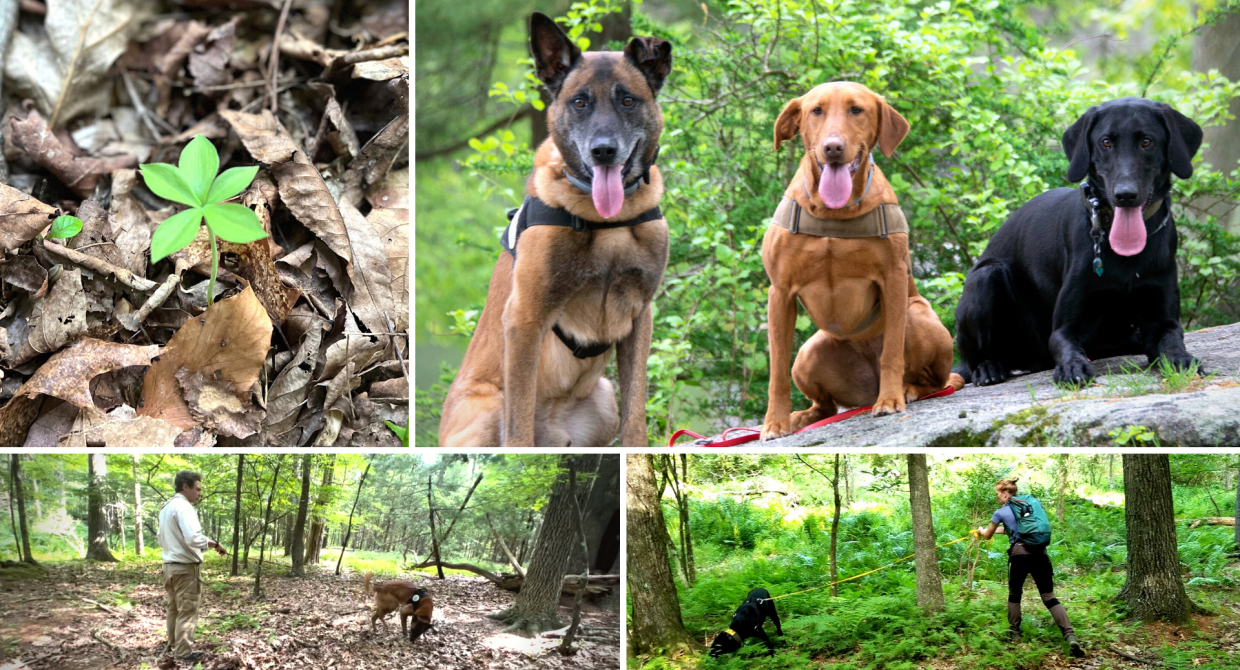Conservation Dogs Sniff Out Endangered Orchids
Title

Body
The New York-New Jersey Trail Conference (NYNJTC) Conservation Dogs Program has partnered with the New Jersey Department of Environmental Protection Natural Heritage Program (NJ NHP) to find a rare, native orchid; small whorled pogonia. Small whorled pogonia (Isotria medeoloides) is federally listed as threatened and state listed as endangered in New Jersey and New York. This charming plant has waxy, grey-green colored leaves which form a whorl at the top of a delicate stem that, at most, measures 10 inches high. The fragile and understated appearance of this plant combined with its rarity pose incredible challenges for the botanists surveying them. In light of these challenges, NJ NHP ecologists have enlisted the help of the NYNJTC Conservation Dogs Program to aid in their surveying process.
The detection dog method is especially powerful when searching for small, cryptic, or sparse targets when humans’ sense of sight falls short. A study conducted by Oregon Fish and Wildlife examining the use of dogs to detect the federally threatened plant species, Kincaid’s Lupine, concluded that dogs could be valuable in assisting botanists during surveys. Using their incredible sense of smell, the Conservation Dogs have already helped invasive species managers, researchers, and biologists find 9 distinct species of plant, insect, fungus, and reptile. Small whorled pogonia will be the 10th species the dogs learn to detect.
The NYNJTC Conservation Dogs Program hopes to assist the state in establishing the size of existing populations, surveying areas where populations were found historically, and searching for new areas with suitable habitats. Together, they hope to establish the viability of using detection dog teams to enhance small whorled pogonia surveys. With better, more accurate surveying, biologists can improve predictions about habitat suitability, learn more about the plant’s biology, and more effectively target conservation efforts. The project’s success is currently being evaluated. At the very least, the teams have helped develop critical training and search protocols and methods that can help guide future rare plant projects.
To learn more about the NYNJTC Conservation Dogs, visit nynjtc.org/dogs.
